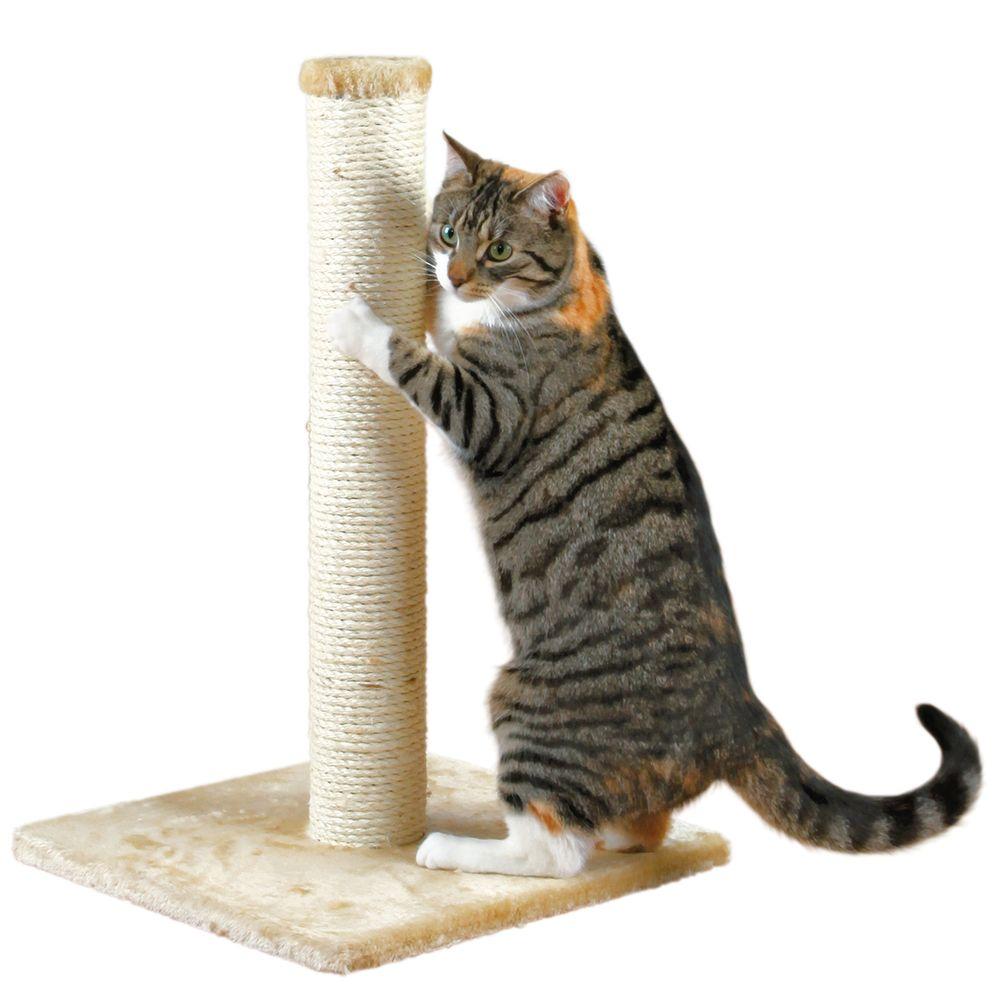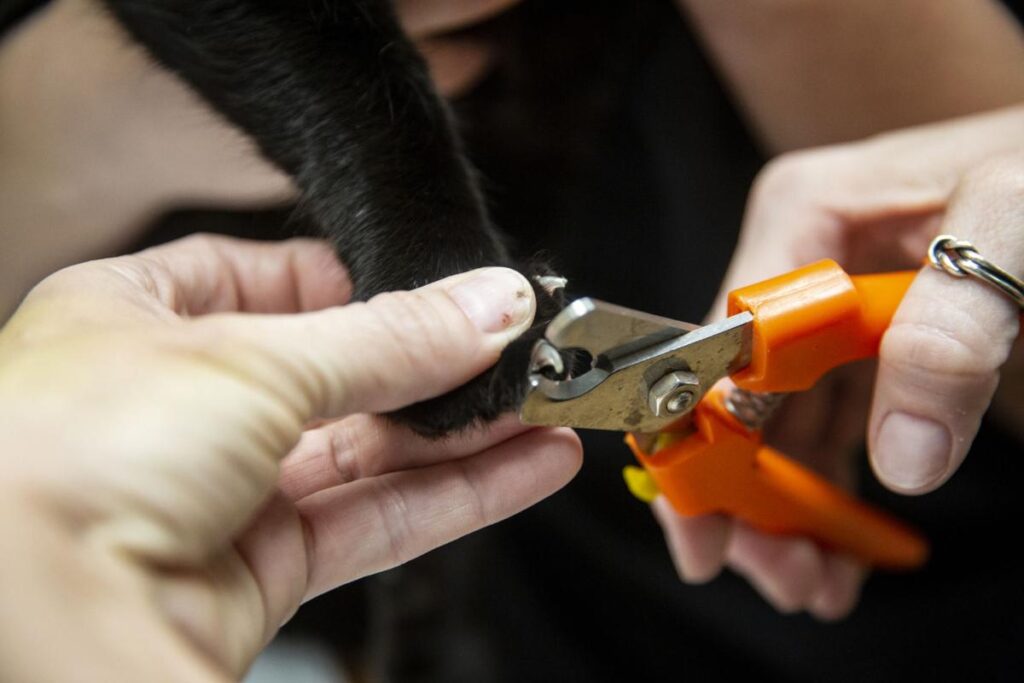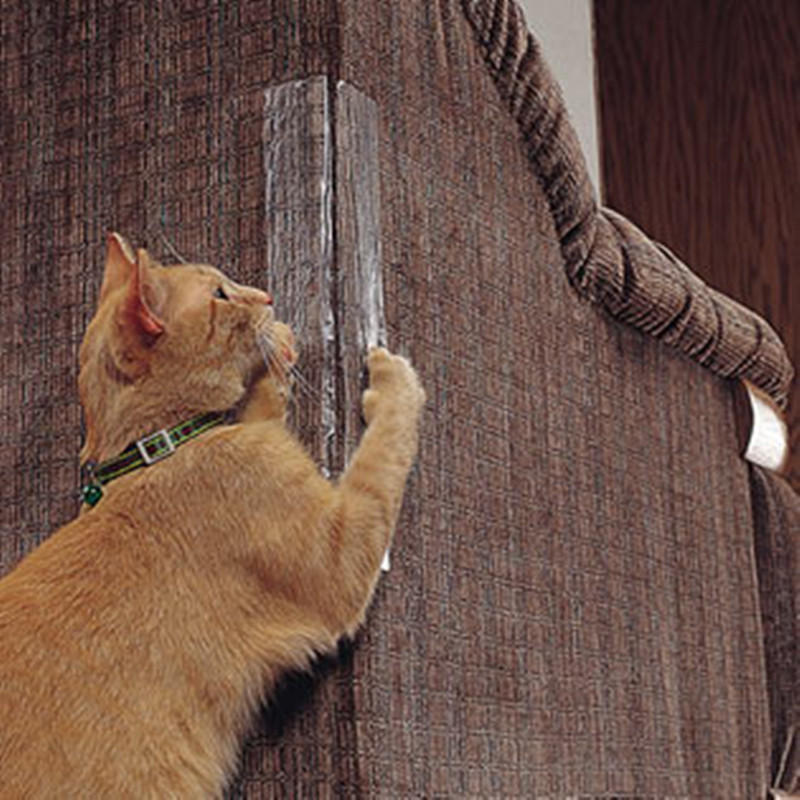Part of grooming a cat involves trimming her nails frequently. No one enjoys being scratched by a cat with long claws.
Being unpredictable, a cat’s injury to you or another member of the family is only a matter of time.
Such a kitty can also wreak havoc on your seats, carpets, bedding, and floors.
Most importantly, a long-clawed cat is a danger to herself. Walking is a problem with long nails.
Also, if they grow too long, they can become overgrown or ingrown causing pain and infections.
The solution is to trim your cat’s nails. But knowing cats, they don’t like their nails trimmed at all.
Unless you train yours from an early age to tolerate the exercise, the task is a real nightmare.
After trimming, you will likely end up with scratches all over and an overly agitated and angry cat.
If you annoy her enough (which is very likely), she will injure your skin and cause a bloody mess.
Is it possible for your cat to trim her own nails? After all, felines have been living without the intervention of man for millennia. What’s the deal, now?
The Succinct Answer

While a majority of cats need trimming, some of them are capable of doing the job themselves.
They do it in many ways including the following:
1. Tree Climbing
Climbing trees is among the top favorite things for our feline friends love to do.
The reason is simple. These animals love being in control of their surroundings – thanks to their predatory instincts.
What better way to know what’s happening around you than stay in a high position?
That’s why humans build towers in prisons and castles, right? Since they are small, cats prefer climbing on trees to get a better view of their environment.
This way, they can spot prey and see potential dangers from a distance.
Trees also provide a way of escape from dog attacks.
Some like being up there so much that they have taken to climbing trees just for fun.
A cat’s claws are heavily used during tree climbing. This part of their body propels them to move up and come down.
Well, since the claws are curved, they are mostly great for ripping the barks of trees going up.
Coming down can become a hassle but either way, cats can get their claws trimmed if they are allowed to climb trees.
Obviously, this is a reality for outdoor cats rather than their indoor counterparts.
If yours falls in the latter category, you will not enjoy such benefits.
2. Scratching Posts
For indoor cats, there are great alternatives for tree climbing in the name of scratching posts.
Sure, these do not resemble actual trees in many ways but they provide a way for your cat to scratch and get her nails trimmed in the process.
As she scratches on the post, the outer layers of her claws will be shed in the process.
Removing those layers will keep her nails trim, neat, and healthy.
Besides trimming a cat’s nails, a scratching post helps a cat to relieve stress. When she’s stressed and anxious for one reason or the other, scratching can help her calm down.
It’s almost like nail-biting for human beings. Today’s scratching posts come with a ton of features including hiding spots and perches.
These offer exercise to the cat and provide a place to retreat to when the house gets too busy.
Related Post: 10 Cat Scratchers that Dull Claws
3. They Chew their Nails
According to PetMD, nail chewing in cats is very normal behavior. It is part of personal hygiene and grooming in the feline world.
Cats chew on their nails to rid the paw pads of dirt, litter, and other forms of debris.
Additionally, if a kitty’s nail sheds halfway or breaks, she may pull on it to stop it from attaching to things.
It’s the same way you would file a hanging piece of your nail when it poses a danger or just becomes annoying.
Here’s something to note, though: while cats can bite their nails to groom themselves, the habit can also indicate a behavioral or medical problem.
Sometimes an infection or injury is causing the cat to bite her nails.
For other cats, the habit is linked to anxiety. Maybe they don’t like certain things in the house or don’t enjoy being left alone.
If this is the cause, be sure to talk to the vet about it.
4. Activity
Last but not least, cats also trim their nails through general activity.
As your cat jumps from the floor to the wall and back or chases after a toy, her nails will come into contact with all kinds of surfaces.
These will act as natural nail files to chip away the outer layers of the nail and keep it trim.
When Should You Trim Your Cat’s Nails?

As seen above, some cats don’t need their nails trimmed at all. However, there are a few exceptions:
- Older cats: Young cats are very active meaning their nails remain healthy and short even without their owners helping them. However, age can slow down their activity levels. As a result, they will need help to trim their claws.
- Polydactyl Cats: With extra toes on their pads, polydactyl cats do not have a good grip on the ground as other cats do. That means the nails do not get filed as the cat moves around as much as those of other cats. If you happen to own such a cat, take up the task of trimming her nails yourself.
Related Post: Normal Cat Paw Vs Polydactyl—A Complete Guide To Your Kitty’s Paws
- Indoor Cats: Even if your cat is not older or ploydactyl but stays indoors 24/7, you will need to check her nails frequently. You don’t want to wait until the kitty’s nails are ingrown or overgrown. Catch them long before this happens.
Related Post: Are Male or Female Cats Better Indoors?
Closing Thoughts
One of the most dreaded things for cat parents is trimming their cat’s nails.
These independent creatures often lash out when their little paws are touched, let alone trimmed.
They can bite, scratch, or do anything to get off your grip. If you are lucky to have an outdoor, active, or nail-biting cat, you are somewhat safe.
Else, if your baby is polydactyl, older, or spends all the time indoors, you have to assess and trim her nails regularly.

Hi! I am Eleanor Price. I started this website after my cat, Louie, almost died from a case of botulism (a type of food poisoning often caused by bacteria that grow on food items). Turned out that my cat’s diet was the problem. I have made it my duty to provide the best information and recommendations about everything cat lovers need to know about their felines’ health and wellbeing. My goal is to find the most informative content on anything feline-related and share it with fellow hardworking kitty lovers.

